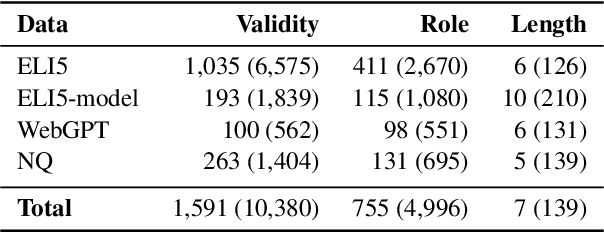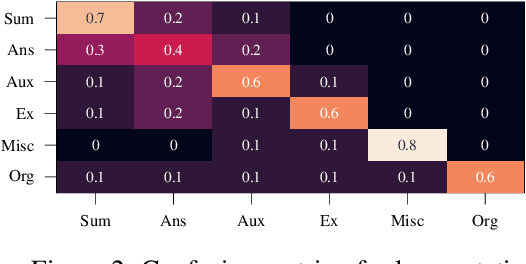How Do We Answer Complex Questions: Discourse Structure of Long-form Answers
Paper and Code
Mar 21, 2022



Long-form answers, consisting of multiple sentences, can provide nuanced and comprehensive answers to a broader set of questions. To better understand this complex and understudied task, we study the functional structure of long-form answers collected from three datasets, ELI5, WebGPT and Natural Questions. Our main goal is to understand how humans organize information to craft complex answers. We develop an ontology of six sentence-level functional roles for long-form answers, and annotate 3.9k sentences in 640 answer paragraphs. Different answer collection methods manifest in different discourse structures. We further analyze model-generated answers -- finding that annotators agree less with each other when annotating model-generated answers compared to annotating human-written answers. Our annotated data enables training a strong classifier that can be used for automatic analysis. We hope our work can inspire future research on discourse-level modeling and evaluation of long-form QA systems.
 Add to Chrome
Add to Chrome Add to Firefox
Add to Firefox Add to Edge
Add to Edge